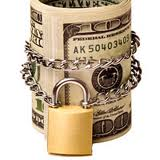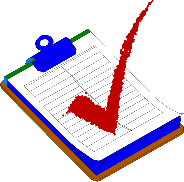 By Elizabeth GodsmarkAtlantic Publishing
By Elizabeth GodsmarkAtlantic Publishing
This sector of the beverage industry, known in the trade as NABs, needs to be taken very seriously if you want to cash in on current drinking trends. More customers today (often affluent, young, career-oriented clientele with plenty of disposable income) are choosing to drink NABs. Health issues, stricter DWI laws, and maybe even image are influencing their decisions to turn to NABs. The fact remains: this trend can mean big bucks. Tap into the possibilities:
- Promotions. Which NABs are consistently popular in your establishment? Buy bulk and sell on promotion. Publicize offers that your customers just cannot resist. Use a large chalkboard, or place "in-your-face" table tents on tables and at the bar.
- Specialize. Don't bother with expensive market research. Consult your regular customers. Ask them what they'd like to see on the menu. Decide on a few in-house specialties. Profits will increase noticeably, as margins for NABs are generally higher than for alcoholic beverages.
- Bottled water. This is no passing fad. Both in the dining room and at the bar, people are choosing to alternate alcoholic drinks with bottled water. Shelf dates tend to be generous (particularly for still, noncarbonated waters), so cash in: buy in bulk for big savings.
- Added value.Serve NABs in sophisticated, unusual glasses that scream "quality"! Customers will happily pay that little bit extra for a "wow" experience.
- Don't price too low. A word of warning. To make the most of this burgeoning area of the drinks market, keep your prices in line with your establishment's other alcoholic beverages. If NABs are priced too low, bartenders will be reluctant to promote them, and customers will think they're nothing special.
This article is an excerpt from the Food Service Professional Guide to Controlling Liquor Wine & Beverage Costs, authored by Elizabeth Godsmark, published by Atlantic Publishing Company. This excerpt has been reprinted with permission of the publisher. To purchase this book go to:
Atlantic Publishing Company
Amazon.com
Topics:
Bar inventory,
alcohol,
Bar trends,
Bar drinks
By Chris ParryAtlantic Publishing
Part 2 of 2: Protecting Your Profits
Your profit margin, like that of any business, is fragile at best. You can sit down with a calculator and try to calculate the exact percentage you'd like to see on each drink. But in practice, a little splash too much here and there can see you falling perilously close to a loss. Follow these rules and you'll be that much more likely to see your bottom line behind the bar match that of your balance sheet estimations.
- Watch what your staff pours. Regularly measure what they consider an ounce. If just one bartender overpours 40 shots a night by 25 percent, you've given away ten drinks for nothing. This kind of waste can get very expensive, especially if you have a large bar staff and they're all pouring more than 40 drinks per night.
- Have your staff keep all the liquor in the glass. Many staff members get lazy as the night wears on, and inevitably they'll start taking shortcuts. One shortcut many take is to line up three or four glasses and pour one after the other in a straight line without raising the head of the bottle. While this may save them a second or two, it also pours a lot of your product directly onto the bar surface, not to mention down the sides of the glasses that your customers are about to put in their hands. It also means your customers are far less likely to get what they've paid for. Don't let it happen.
- There are alternatives to free-pouring. While free-pouring certainly is more stylish and perhaps faster than measured pouring, it is also definitely far from accurate. As bar staff generally tend to err on the side of caution, they usually pour too much rather than too little. Control-pour spouts, such as Posi-Pour spouts, are a little more expensive than the usual free-pour, but they give a far more accurate pour without the need for clunky overhead systems or sophisticated electronics - and at much the same speed as free-pourers.
- Liquor control system. If you really want to keep an eye on your outgoings, a liquor inventory control system may be your answer. The price of setting these systems up, and maintaining them, can be significant. Then again, you get what you pay for.
This article is an excerpt from the Food Service Professional Guide to Bar & Beverage Operation, authored by Chris Parry, published by Atlantic Publishing Company. This excerpt has been reprinted with permission of the publisher. To purchase this book go to:
Atlantic Publishing Company
Amazon.com
Topics:
Bar inventory,
managing liquor inventory cost,
bar business,
profit,
Bar Management,
alcohol cost,
bar control,
controling costs
By Chris ParryAtlantic Publishing
Part 1: Recruiting a Security Staff
 Knowing when and how to recruit security staff is an important part of any popular bar operation. Should you hire your own or deal with a security firm? If you hire your own people, what rules do you set for them? How do you avoid getting sued if someone is removed forcibly? Many venues utilize outside security firms to provide security on busy nights, and most do so as a means of simplifying their security needs and reducing liability issues. But an outside contractor doesn't always make things easier:
Knowing when and how to recruit security staff is an important part of any popular bar operation. Should you hire your own or deal with a security firm? If you hire your own people, what rules do you set for them? How do you avoid getting sued if someone is removed forcibly? Many venues utilize outside security firms to provide security on busy nights, and most do so as a means of simplifying their security needs and reducing liability issues. But an outside contractor doesn't always make things easier:
- Outside contractors. This means you don't need to concern yourself with compensation, holidays, sick days, wages, etc. However, it also means that your level of control over the standard and selection of those who work at your venue is reduced. Also, with security firms costing more per hour than individual contractors or staff, your bottom line can suffer. Consider hiring one or two of your own staff who you can use on regularly busy nights and filling in any gaps with contractors that may come up.
- In-house employees. While harder to find, train, and do background checks on, they are usually more loyal and tend to stay longer than contractors. If you want to have complete control over how your security behaves, how they deal with customers and their loyalty to the company, there can be no better way to work than to simply employ the best people you can find.
- Security personnel. Hiring security and calling them independent contractors to avoid liability and payroll taxes is a tactic some bar operators employ to make the process simpler and cheaper. But this can bring more problems than it solves. If your security "contractor" does injure someone when removing him or her from the premises, are you confident that your "contractor" won't claim she is an employee? Do you need that kind of a fight?
- Rules. Security guards need ironclad rules of engagement that dictate what they can and cannot do. Ensure that rules are in place that every security employee knows and signs. So, if there is a liability problem down the road, you can point out that your rules were broken and that you were not in any way negligent in your duty of care to the client.
- ALWAYS do a background check on your potential security staff. It may cost a little and extend the hiring process, but if you don't want a 300-pound cocaine addict to be throwing your customers around a back alley, you'll want to make sure you're not hiring any 300-pound cocaine addicts.
- Attorney involvement. Talk to your lawyer about drawing up any and all papers you'll need to ensure that your organization is completely covered and doing everything it can to ensure your security staff behave responsibly. Spending a hundred bucks today on legal fees can save you thousands down the road. Similarly, check with your insurance company to confirm your legal liability responsibilities to your security staff.
- Subcontracting security staff is a legitimate means of filling a need. This works if you really don't have the time to micromanage your security concerns, or to fill in during times when your regular staff is unavailable or inadequate in number. You can subcontract individuals as long as you give them a Form 1099 for any cash paid over the $600 mark; this will, in turn, keep your workers' compensation bill down.
- Equip your security staff for their job. Spotting fake IDs isn't always easy. If you have 200 people waiting to go through your door, your security staff can't spend five minutes with every person, but there are tools available that can help. An electronic ID-checking unit will read the magnetic strip on any state driver license, verify that the license is valid, and display the holder's exact age - not to mention point out if the document is a fake or has been tampered with. These systems are small, inexpensive to purchase and limit the chance that your staff will let in an underage drinker. Talk to Intelli-Check (www.intellicheck.com) by calling 800 444-9542.
This article is an excerpt from the Food Service Professional Guide to Bar & Beverage Operation, authored by Chris Parry, published by Atlantic Publishing Company. This excerpt has been reprinted with permission of the publisher. To purchase this book go to:
Atlantic Publishing Company
Amazon.com
Topics:
Bar inventory,
NightClub Management,
bar business,
Bar Management,
Nightclub Consulting,
opening a bar,
bar control,
Control,
inventory control
By Chris ParryAtlantic Publishing
Part 3: Theft-Reduction Procedures
 More often than not, scams and thievery can be detected and/or prevented relatively easily. Strict enforcement of all employee rules is a must and vigorous prosecution of any offenders is essential. Employees must be made clearly aware of the dire consequences of flouting the house rules - every detail must be addressed.
More often than not, scams and thievery can be detected and/or prevented relatively easily. Strict enforcement of all employee rules is a must and vigorous prosecution of any offenders is essential. Employees must be made clearly aware of the dire consequences of flouting the house rules - every detail must be addressed.
- Have a manager total the cash at the end of a bar shift. While the bartenders may feel distrusted, you can always point out that the rule is in place to protect honest staff.
- House rules. All new members of staff should be required to sign a confirmation that they have read the house rules, fully understand the implications involved and agree to follow the rules to the letter.
- No drinking on duty. Prohibit all bartenders from drinking while on duty. Also, strictly regulate off-duty drinking. Off-duty drinking can see fellow bar staff overpouring, giving away free drinks or undercharging their colleagues, and while staff should be encouraged to socialize with patrons after hours, this should be closely watched.
- Bartenders should not be involved in the
stock-taking and inventory-counting process. Nor should they be involved in receiving, ordering or issuing inventory. It might be a painful process, but this really should be a management-only function.
- High-value inventory. Strictly enforce all security procedures for liquor, wine, beer, spirits and any other high-value inventory. Only key personnel should have access to storage areas, and everything that comes out should be duly noted.
- Require bartenders to record post-shift bar-
par readings. This refers to the number of bottles left in fridges and behind the bar after a shift has ended. Engage in spot-checking of this count to ensure that no thieving is taking place.
- Prohibit the practice of recording more than one transaction per drink ticket. If your bartenders are allowed to use a "running" ticket, they can easily neglect to record all the drinks they have actually sold and pocket the difference.
- Strictly enforce voiding procedures. If an amount is rung up on the register, the bartender should not be allowed to void it without management approval.
This article is an excerpt from the Food Service Professional Guide to Bar & Beverage Operation, authored by Chris Parry, published by Atlantic Publishing Company. This excerpt has been reprinted with permission of the publisher. To purchase this book go to:
Atlantic Publishing Company
Amazon.com
Topics:
liquor inventory,
Bar inventory,
bar inventory levels,
Bar staff,
liquor theft,
Bar Management,
bar control,
inventory counting,
inventory control
By Chris ParryAtlantic Publishing
Part 1: Scams to Watch For
Employees can very easily fall into a habit their employers, and if you're not careful, you can be caught out for thousands of dollars, not to mention disgruntled customers. Keep an eye out for these 14 favorites:
- The substitute. An employee buys his own bottle of a fast-moving spirit, brings it in at the start of the shift, and over the course of the night substitutes his own for the bar's bottle. Every time he sells a shot of this product, he then simply pockets the money, thus earning a large profit on his own alcohol while your stock stands still. While these people are not thieving your stock per se, they're thieving your business, so ensure you stamp or mark all of your spirit and liqueur bottles; check the empties regularly, and keep employee bags away from the bar and stockroom areas.
- The short-pour. Your bartender short-pours every shot of a particular fast-selling spirit by between 25 and 50 percent, keeps note of how many shots she's sold from the bottle and when she's sold the number of shots that usually come from the bottle, she pockets the money from the remaining shots. Make sure that you check register receipts against the bottles used, and if possible, you use a computer-controlled pouring system, to take the opportunity to scam out of the employee's hands.
- The "00." Some registers can be opened with the press of just one button or from entering in a total of $0.00. Unbeknownst to some bar operators, this is the number-one means of rip-offs by staff. A customer buys a beer and gives the bartender a fiver. "Keep the change," says the customer as he walks off, so the employee hits the "register open" button, puts in the five-dollar bill and takes out five dollars in coins and singles for his or her pocket or tip jar. How do you avoid this scam? Remove that button. Your cash register provider can do this with no problem at all, and if a customer needs change in the future, your bartender simply asks him to wait for another sale to take place. Or even better, provide change machines.
- Bogus breakage. Oops! A full vodka bottle hits the floor and the bar loses, big time. But did it really hit the floor? You might have a breakage bucket in which your staff are to put any broken bottles to show that they actually broke, but how do you know that the contents weren't poured into a hip flask beforehand? Or worse, that the contents were sold and the proceeds pocketed? The answer is simple: start a "you break it, you pay for it" rule. Of course, you don't need to enforce this rule if you don't think people are taking advantage, but it will stop the thieves.
- Wasted waste. 'The beer lines were a little gassy today." Well, that might explain the two gallons of beer waste in the drip trays - but does it really? Pocketing the money for a draft beer and pouring a glass of water into the drip tray is an age-old scam and very hard to detect. Make sure your staff keep measurements of any beer waste and keep track of who wastes what. In time, any trends should become apparent, and even if certain staff members aren't crooked, you'll be able to tell very easily if they need lessons at pouring beer.
- The backhander. Your security staff might not feel that taking ten bucks to let someone into the front of the line is wrong, but at the end of the night, when the person who paid that ten bucks has to go home because she's out of cash, it's your potential bottom line that suffers. To combat this, simply ask someone you know to go to the door and offer a kickback to jump the line. If the kickback is accepted, you need a new security guard.
- The over-charger. Your bartender either rings up a price higher than what you've set for a drink or charges regular prices but rings up "Happy Hour" prices, pocketing the difference. To combat this, ensure that cash register tapes are changed at the end of every shift and the bartender explains any "Happy Hour" discounts. Likewise, ensure that all drink prices are posted clearly for your customers so that they can identify an overcharge.
- The over-pourer. This bartender simply pours more than he or she needs to and hopes for a hefty tip. Keep an eye on your inventory, and this one should be easy to spot.
- Rounding up rounds. Bartenders tally up a round of drinks as a "total price," rather than as separate items. This makes it easier to inflate that price without it being noticed by the customers. They then pocket the difference when they ring it up. To combat this possibility, keep drink prices clearly posted behind the bar or on table menus.
- The "soft" scam. Your bartender simply neglects to charge for the mixer component of a drink, thus peeling a small bonus for every mixed drink he or she sells. This should be easy to spot if you check register ribbons, but if you don't, your staff can make a fortune.
- The "padded" tab. When your customers run a tab, the bartender pencils in an inflated total, takes the money from the customer, then later erases it, replacing it with a correct total.
Removing pencils from behind the bar and telling your staff that they must use pens is the best way to fight this one.
- The substituted cash register tape. This ingenious little plan involves the bartender leasing a cash register just like yours and bringing in his or her own prepared cash register tape, substituting it for the real tape and pocketing the cash difference. Essentially, if you keep bartenders from "Z"ing their own tapes, you'll prevent this from being possible.
- The refund. This is a simple, small-time scam where the bartender claims that a discrepancy in his or her takings was refunded to a customer for money lost in faulty vending machines or gaming equipment. Have any customer seeking a refund fill in a small claim form, with phone number and ID details included, and this shouldn't be an issue. Most customers won't mind doing this if they have a legitimate refund claim.
- The jigger switch. The bartender brings in his or her own shot glass that seems identical to your normal barware, but is actually smaller. After several short measures, the bartender can start pocketing money without the inventory showing a shortage. Fight this by clearly marking your pouring measures and doing regular checks of your bar equipment.
This article is an excerpt from the Food Service Professional Guide to Bar & Beverage Operation, authored by Chris Parry, published by Atlantic Publishing Company. This excerpt has been reprinted with permission of the publisher. To purchase this book go to:
Atlantic Publishing Company
Amazon.com
Topics:
liquor inventory,
Bar inventory,
liquor theft,
bar business,
Bar Management,
bar control,
inventory counting,
inventory control
By Elizabeth GodsmarkAtlantic Publishing
Part 4 of 6: Securing Inventory to Reduce Pilferage
Don't leave stock security to chance. Any slackness in this area can seriously dent profits. Your central storeroom may well be as secure as a vault, but this isn't good enough. Tight security is essential in all locations where inventory is stored - from reception to behind the bar. Design a security system that ensures that all liquor, wines and beverages stay in their correct location throughout the operation. The following security techniques will help reduce pilferage:
- Storeroom keys. Change locks and combinations regularly. Insist that all keys remain on the premises at all times.
- Roll-down screens and lockable cabinets. Keep high-value inventory inaccessible to cleaning staff and other employees when the bar is closed.
- Limit access. Only key members of staff, such as management, receiving and storage personnel, should be allowed to enter the storeroom. It is also a good idea to limit the issuing of inventory to specific, set times.
- Lockable refrigerators and walk-in coolers. All storage areas should be completely lockable. Alternatively, have at least one lockable shelf for the highest-value inventory.
- Bar stock security. Danger zone! Keep the quantity of liquor and beverages stored behind the bar to a workable minimum.
- Investigate state-of-the-art locking devices. They may prove a sound long-term investment. Systems that involve combinations, codes, PINs and swipe cards are becoming increasingly popular.
Topics:
Bar inventory,
NightClub Management,
bar control,
managing liquor costs
By Elizabeth GodsmarkAtlantic Publishing
Part 3 of 6: Good Liquor Inventory Management Improves Cash Flow and Maximizes Profits
Inventory Levels Affect Cash Flow
The aim is to maintain that fine balance between J. running out and holding too much stock. Get it wrong, and you'll find that your working capital isn't working for you! Remember, the larger your inventory, the more difficult it is to control.
- Keep inventory at a minimum level. But not so low that you risk running out. Recommended inventory for high-turnover brands is approximately one to two weeks' worth of stock.
- Jump in with special promotions. If you think you've miscalculated and overstocked, shift the inventory sooner rather than later, while it still has high value.
- Get to know the drinking patterns of your regular patrons. This information helps you calculate the bar pars or minimum inventory levels for each bar and the main stockroom.
- The perpetual inventory is a valuable tool. Keeping tabs on the flow of liquor, wines and beverages through your operation is probably the best way of knowing where to pitch inventory levels. Monitor stock daily.
- Weekly deliveries. In the drinks industry, this is the norm. Work your inventory levels around these weekly deliveries and avoid the cardinal sin of running out.
Manage Your Stock Wisely and Maximize Profits
Your challenge, in a nutshell, is to order liquor, wine and other beverages in the right size and quantity and at the right time and price.
- Inventory deliveries - timing. Schedule well liquor, beer and house wine deliveries for the same day each week, ideally a couple days after you place the order.
- Well liquor quantities. Order items with a short turnover rate, such as well liquor, in bulk. Well liquor moves fast, offering you a great opportunity to boost cash flow. Take advantage of case discounts. Also, consider larger 1.75-liter bottles instead of the usual 1-liter bottles if you think your turnover warrants it. There are big savings to be made in this area. Use larger bottles for special promotions.
- Beer is different. In order to sell beer at its freshest, arrange for deliveries on a weekly basis, or dally, if your establishment has the capacity to cope with the extra workload. Little and often is better when it comes to maximizing on beer profits.
- Wine. Order house wine weekly, other wine bottles by the case once a month. Only buy special vintage wines once or twice a year. Take a specialist's advice before stocking up on expensive wines. They can cost you dearly.
- Liquor and liqueurs. The following is a useful guideline: If it takes less than five weeks to turn a product, order by the case. If it takes longer than five weeks to sell a particular brand of spirits, order by the liter.
Topics:
Bar inventory,
bar inventory levels,
Bar Management
By Elizabeth GodsmarkAtlantic Publishing
Part 1 of 6: Establishing Good General Inventory Procedures Can Reduce Costs
General Inventory Procedures
Minor overall changes can result in major cost reductions. Take a fresh look at your existing inventory system. In every establishment, there is general room for improvement. For minimum effort, you can get maximum value out of your stock.
-
Timing. Move all drinks to a designated storage area as soon as they arrive. Don't let stock hang around. Drinks (and wine especially) need to be stored in an ambient environment, or their quality can deteriorate rapidly - and so can your profits! Also, unattended drinks, languishing in receiving areas, present a great temptation. Liquor is high on any thief s hit list.
-
Faulty goods. When receiving merchandise, look out for cracked and chipped bottles, mislabeled boxes, outdated or cloudy beer, correct type and vintage of wine, raised corks, leaking and weeping bottles, damaged labels and wrong-size bottles. Contact the supplier immediately about any dis crepancies.
-
Storage area. Your storage area must be fit for its purpose. Poor storage conditions can result in poor quality, breakage and escalating costs.
-
Security. Basic, but obvious. A good security system removes temptation and reduces the risk of external break-ins.
-
Rotate stock. First in, first out. This is important and avoids wastage, overstocking and running out. Pay special attention to beers: their shelf-life is limited. Most beverages, also, have no longer than a month before the sell-by date.
-
Control. Large or small, every drinks outlet needs some form of control procedure. Track your products from the moment they arrive at your premises to when they are sold. While this doesn't have to be complicated, the key to any good control system is to make sure that all the liquors, wines and beverages are located in the right place at the right time and are being rotated properly.
Make the Most of Your Storage Areas
Where and how you store your liquor, wines and beverages can make a big difference in turnover and profits. Once you have taken delivery, treat your inventory with respect - it has the potential to make or break your business.
- Location. Define storage areas. Are you using the most convenient areas for storage? Rethink. Centrally located storerooms and walk-in coolers make ideal storage areas. Easy access saves time and money.
- Other storage areas. "Storage" means more than an area for dumping received goods! Storage locations include shelves, workstations, reach-in refrigerators and behind the bar. Keep all these areas accessible and clutter-free. It speeds up your operation and reduces breakage.
- High-value wines. Consider separate cellaring for prestige wines, somewhere away from the busy "shop floor" environment. As turnover of such wines is slower, accessibility is not top priority. More important is security and perfect storage conditions (even vibrations can affect the quality of good wines!).
- Extra security. All drinks should be stored in a secure area. Organize the layout of storage areas to offer maximum security for liquor and high-value wines. Only personnel who need keys should have them.
- Quantity. Drinks can be stored in bulk in the main storage area. Drinks in general storage areas, such as behind the bar, are better stored in the units or quantities in which they are sold.
- Environment. Know your product and store it accordingly. Maintain proper temperatures, humidity and ventilation. Wine is particularly sensitive to environmental influences. It can easily absorb odors from nearby food storage areas. Poor storage practices can quickly reduce the quality of stored inventory - and nothing affects profits like quality!
Topics:
Bar inventory,
Liquor cost,
inventory counting
By Elizabeth GodsmarkAtlantic Publishing
Part 7 of 7: Reduce Purchase Costs
 The purchasing department is the linchpin when it comes to reducing costs. It is much easier to control costs in this area than anywhere else in the operation. The bottom line is that astute buying techniques offer the best opportunity for a business to increase its overall profits.
The purchasing department is the linchpin when it comes to reducing costs. It is much easier to control costs in this area than anywhere else in the operation. The bottom line is that astute buying techniques offer the best opportunity for a business to increase its overall profits.
- Monitor market trends. An upsurge in popularity of a certain beverage can lead to increased competition amongst vendors. Play them off against each other occasionally. Negotiate. You have nothing to lose!
- Welcome new ideas. Purchasers should always be on the lookout for new ideas and new ways of reducing costs. Don't close your door to sales representatives. They may genuinely have something of interest to your establishment. Consider their promotional discounts.
- "Opportunity buys." Don't rule them out. Take a look at items that may soon be discontinued or overstocked merchandise where a supplier has simply miscalculated demand. You could make big savings.
- Cooperative purchasing. Consider "pool" purchasing with other enterprises. It can give you added purchasing power.
- Change purchase unit size. Buy drinks in larger volumes. This can trim costs considerably, particularly in the case of liquor purchases where sell-by dates tend to be more generous.
- Place multiple orders. Consider buying your full range of drinks from one wholesaler. It may offer you amazing reductions, especially if it's keen to do business with you on a repeat basis.
Topics:
liquor inventory,
inventory managers,
Bar inventory,
liquor purchasing,
managing liquor inventory cost,
bar business,
Bar Management,
Liquor Inventory savings,
inventory control,
managing liquor costs
By Elizabeth GodsmarkAtlantic Publishing
Part 4 of 7: Simplify Purchasing Procedures and Define Duties
Keep Purchasing Procedures Simple
Whatever the size of your operation, certain repetitive purchasing procedures are unavoidable. At the very minimum, a buyer has to complete a purchasing requisition, a purchase order, a shipping instruction, a receiving report and carry out some form of quality control. Purchasing procedures, however, exist for a good reason. Save time, effort and money by simplifying them.
- Change your attitude. Instead of viewing purchasing procedures as an irritation, think of them as a support system. Accurate documentation in this area has rescued many a business from the jaws of liquidation.
- Concentrate on basics. Buyers should always have adequate purchasing procedures in place. The key, however, is to avoid overkill. If a certain procedure in the buying cycle is irrelevant to your establishment, get rid of it. A written requisition, for example, may not be necessary if you regularly "call off stock ordered on a contract basis. Adapt and be flexible.
- The purchasing requisition. Save time. Establish a pared-down requisition procedure that identifies ongoing requirements and automatically triggers the purchasing cycle.
- The purchase order. No skimping here! The purchase order is a legal contract between purchaser and vendor. Even in small organizations, the purchase order needs to be put in writing. Get it right. It can save time, hassle and money in the long run. A computer-generated purchase order considerably reduces human error.
- The shipping instruction. Keep it simple. This piece of documentation is merely a confirmation of instructions from the buyer to the seller. Whether handwritten or computerized, the shipping instruction needs only to contain simple information. It should include the purchase order number for the shipment, and it, too, should be numbered for record-keeping purposes.
- The receiving report. Again, simplify. Although an important document in the purchasing cycle, it only needs to contain basic information: the quantity and condition of the merchandise, whether the merchandise tallies with the original purchase order, a record of stock shortages, the recipient's signature and the date of receipt.
Define Your Purchasing Duties
It is all too easy to get bogged down in the day-to-day activities of purchasing. Remind yourself, occasionally, of your areas of responsibility. It helps you to focus on doing a good job.
- Don't lose sight of your overall goal. Your responsibility, as a purchasing manager, is to maximize value so that your establishment gets the most for its money. No more, no less.
- The cycle of duties. Always bear in mind that a purchaser's areas of responsibility cover an entire cycle of activities: identifying the needs of the establishment, planning, sourcing merchandise, purchasing, receiving, storing and issuing.
- Control. Effective management and control of the purchasing cycle, with a constant eye on costs, is your number-one duty.
- Dealing with vendors. The purchasing department (even if you are a one-man band) is responsible for all external dealings with vendors. The purchaser should be able to handle all vendor-related queries.
- Avoid taking your purchasing problems onto the "shop floor." Front-of-house personnel will not appreciate interruptions while they are trying to please customers. Apart from emergencies, keep all purchasing queries for later.
- High standards. It is the purchaser's duty to make sure that all merchandise purchased is fit for its purpose and of a consistently high quality. High standards = good value.
Topics:
liquor inventory,
inventory managers,
Bar inventory,
liquor purchasing,
Lineup control,
Bar Management,
bar control,
inventory counting,
purchasing,
inventory control
 By Elizabeth GodsmarkAtlantic Publishing
By Elizabeth GodsmarkAtlantic Publishing



 More often than not, scams and thievery can be detected and/or prevented relatively easily. Strict enforcement of all employee rules is a must and vigorous prosecution of any offenders is essential. Employees must be made clearly aware of the dire consequences of flouting the house rules - every detail must be addressed.
More often than not, scams and thievery can be detected and/or prevented relatively easily. Strict enforcement of all employee rules is a must and vigorous prosecution of any offenders is essential. Employees must be made clearly aware of the dire consequences of flouting the house rules - every detail must be addressed.


 The purchasing department is the linchpin when it comes to reducing costs. It is much easier to control costs in this area than anywhere else in the operation. The bottom line is that astute buying techniques offer the best opportunity for a business to increase its overall profits.
The purchasing department is the linchpin when it comes to reducing costs. It is much easier to control costs in this area than anywhere else in the operation. The bottom line is that astute buying techniques offer the best opportunity for a business to increase its overall profits.

